Content
The grapes of the Ukrainian breeder Zagorulko V.V. was bred by crossing the popular varieties of ZOS and Codryanka... The hybrid acquired a bouquet of berry aroma, thus gaining popularity among winegrowers. Over time, the Viking grapes migrated from the Ukrainian lands to the Russian southern regions. Now the hybrid can be found even in the Moscow region.
The main characteristics of the hybrid
A feature of Viking grapes is the early ripening of bunches, which is typical for many hybrids. About 100 days after bud break, the first ripe berries will appear. Harvesting time falls in the first decade of August.
Grape seedlings are characterized by fast survival rate. Having adapted after planting, the vine begins to grow intensively, forming a spreading bush. Pollination of the hybrid occurs quickly due to the bisexual flowers. Viking is suitable as a pollinator for nearby growing unisexual plants.
The frost resistance of grapes is average. The vine is able to withstand negative temperatures down to -21aboutC. In the northern regions, Viking is difficult to grow. It is easier for the vine growers of the Moscow region to do this, but for the winter the vine will have to be well covered. In addition to the bush itself, it is important to keep the fruit buds of the grapes from freezing. Otherwise, you will have to forget about a good harvest of berries. Optimal weather conditions for Viking in the south. Vine growers do not cover the vine in warm regions.
Considering the description of the variety, photo, Viking grapes, it is worth touching on the topic of watering. The hybrid does not respond well to high humidity. From frequent watering, rains, with a close location of groundwater, the berries in bunches begin to crack. At high humidity and temperature, there is a threat of fungus damage to grapes. If such weather conditions are observed, it is necessary to immediately carry out preventive spraying of the vine with anti-rot preparations.
Viking bunches are conical in shape. The berries are large, densely packed. The mass of one bunch is from 0.6 to 1 kg. Despite these characteristics, the hybrid does not differ in high yield. The dense flesh is covered with a tough skin that protects the berries from wasps and other pests. However, when grapes are eaten, it is practically not felt. At the stage of technical maturity, the berries turn purple. A fully ripe bunch of grapes in the sun shows a dark blue color.
The popularity of the Viking is given by the taste of berries. The sweet-sour pulp is filled with a fruity aroma with a predominance of plums. With moderate watering of the hybrid, a good presentation of the berries is observed. The grape harvest can be used commercially. Berries from the bunches do not crumble during transportation, as well as when hanging on the vine for a long time.
Positive and negative qualities of the hybrid
In general terms, the Viking grape variety has the following advantages:
- early ripening of the crop;
- bisexual inflorescences;
- excellent taste of berries;
- bunches lend themselves to transportation, keeping their presentation.
Equally to the merits, there are negative qualities of the Viking:
- the hybrid is afraid of low temperatures;
- berries do not react well to waterlogging;
- affected by fungi and rot;
- low yield.
Viking growers consider the Viking to be a capricious hybrid that requires careful maintenance. Only excellent taste makes fans to plant 1-2 bushes of aromatic grapes in the garden.
Features of agricultural technology
If a grower is looking for information about the Viking grape, a description of the variety, photos, reviews, then he will want to know the features of agricultural technology.
Planting cuttings
The Viking, like most cultivated grape varieties, loves fertile soil. In poor lands, berries lose their taste and aroma. The hybrid takes root well on black soil. The swampy area is detrimental to grapes. If the groundwater is located high on the site, the cuttings are planted on a hill. A place for grapes is chosen from the south side of the site, and the southwest is also suitable. It is advisable to find an area that is not very windy.
Planting grape cuttings Viking begins in the spring, when the soil is well warmed up. Grape growers practice autumn planting, but it is advisable to do it earlier. The stalk must have time to take root before the onset of frost and stock up on useful substances.
Viking bushes are vigorous. For good development of the vine, a minimum distance of 3 m is observed between seedlings. In warm soil, the root system of grapes quickly takes root and begins to grow intensively. A good planting material is considered, the roots of which are at least 2 mm thick. Moreover, they should not break with a light touch of the hand. At the time of planting, the handle should have at least 4 healthy buds. The Viking root system is soaked in a growth promoter before planting.
Cylindrical holes 80 cm deep and wide are dug under each grape seedling.A pillow 25 cm thick is poured into the hole from a mixture of fertile chernozem and humus. A 5 cm thick layer of compacted soil is arranged on top, but first 300 g of potassium and superphosphate are added to it. A small mound is formed from the soil, and the roots of a Viking seedling are laid sideways on top.
Backfilling of the hole is performed with fertile soil. The filling layer is usually about 25 cm, and the growth remains above the ground. Immediately after disembarkation grape stalk The Viking is poured over with three buckets of water. After absorbing the liquid, the soil in the hole is loosened. The second and third watering with the same amount of water is carried out at intervals of two weeks. The loosened soil is covered with mulch from above.
Features of caring for grapes
Throughout the growing season, adult Viking grapes are watered from mid-spring to late October. The hybrid does not like an abundance of moisture. Irrigation rates are set individually, depending on weather conditions and the location of groundwater.
For the entire spring-autumn period, the Viking is watered 7 times:
- In early spring, when tying dry vines.
- After pruning during juicing. If the grape vine on the cuts does not cry in the spring, urgent watering is needed.
- When the growth of shoots is 30 cm.
- Before flowering.
- When small berries appear in the clusters.
- The sixth watering of the grapes is determined individually according to weather conditions. In dry weather, it is needed for pouring the berries with juice.
- After harvest.
The number of Viking waterings is increased in dry, hot summers.
At the end of October, the vine is laid in preparation for the winter season. For shelter, use any waterproof material and soil. The lining is also placed under the vine itself on the ground to prevent bud rot. The backfill soil is well moistened and covered with a layer of 20 cm.
If a cover is made from one film, arcs are placed over the vine. The stretch is done so that the material does not touch the vine. Otherwise, during severe frosts, these areas will freeze.
Grape roots are also worth worrying about.For the winter, the soil around the bush is mulched with a thick layer of straw, peat or sawdust.
Top dressing
To increase the yield of the hybrid, especially during fruiting, the Viking is fed. It is more convenient to apply fertilizer together with watering. A large amount of water, when absorbed, delivers the fertilizer deep to the roots. For the entire growing season of grapes, fertilizers are applied three times with an interval of one month.
Viking responds well to nitrogen-containing preparations and organic matter in spring. To feed the hybrid, you can mix 2 tbsp. l. ammonium nitrate with a bucket of manure. Superphosphate is added to increase the self-pollination process. Every three years, a ditch 50 cm deep is dug around the bush, 1.5 buckets of humus are covered, and they are covered with earth from above.
Pruning vines
The best time to prune your vines is in the fall. In Viking seedlings of the first year of life, ripe shoots are removed. In the future, the young vine is pruned to five buds. Shoots growing out of the ground are left on new sleeves. In adult bushes, long lashes with 20 buds are left in the spring for tying large berries in bunches. The advantage of autumn pruning is the further convenience of laying vines for shelter for the winter. By the spring, the cuts will heal a little.
Disease prevention
The Viking hybrid has the main drawback - it is affected by fungi and is sensitive to rot pathogens. For reliable protection of the harvest, grapes are subjected to preventive spraying from early spring. The first fungicide treatment is performed at the beginning of the growing season, when the shoots grow up to 20 cm in length. The second Viking treatment is performed before, and the third after flowering. Of the store-bought drugs, Antracol or Strobi are popular. Most amateurs recognize Bordeaux liquid as the best.
The video shows the Viking grapes in August:
Testimonials
Looking for information about Viking grapes, a description of the variety, photos, videos, reviews of winegrowers will also be useful for novice gardeners.
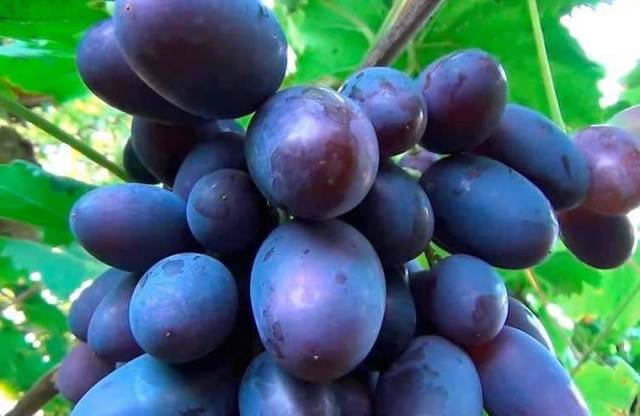

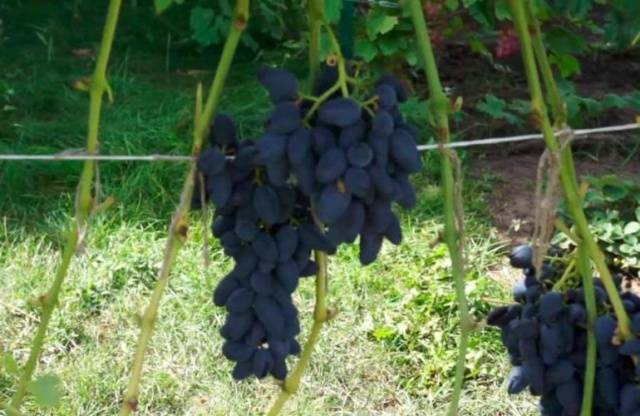
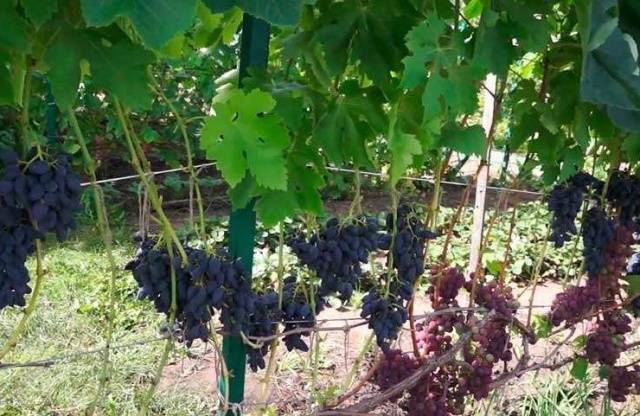

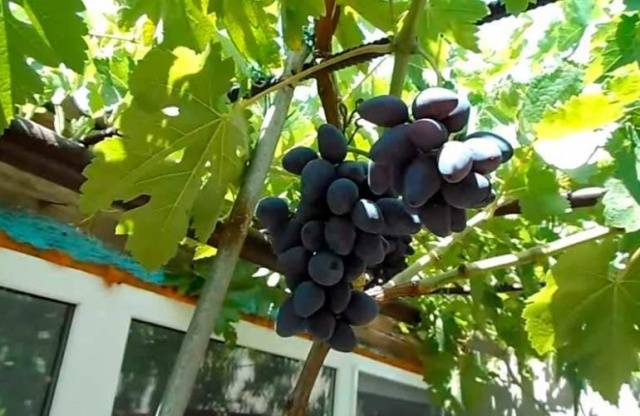
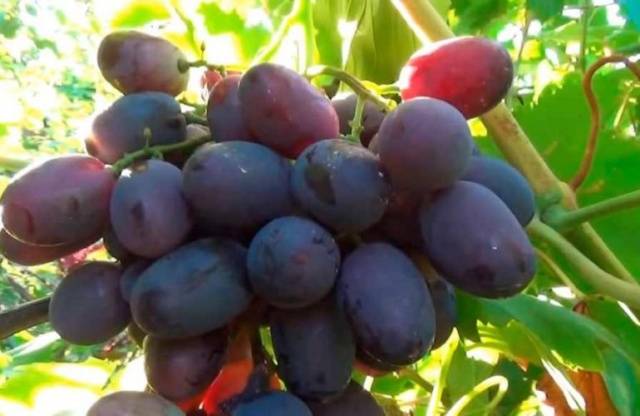
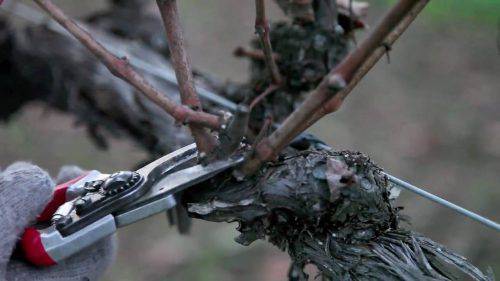
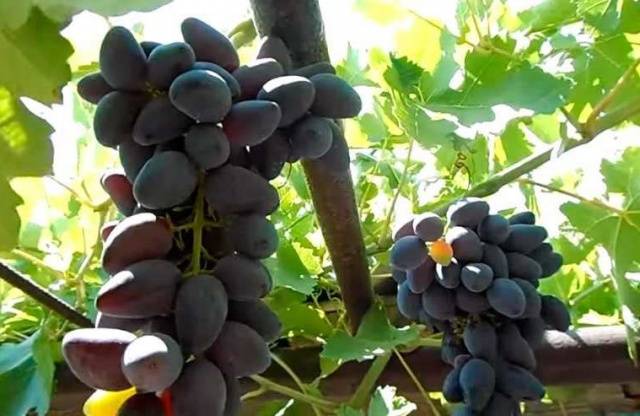









The vine is too fragile to cover. It breaks even with a slight bend.